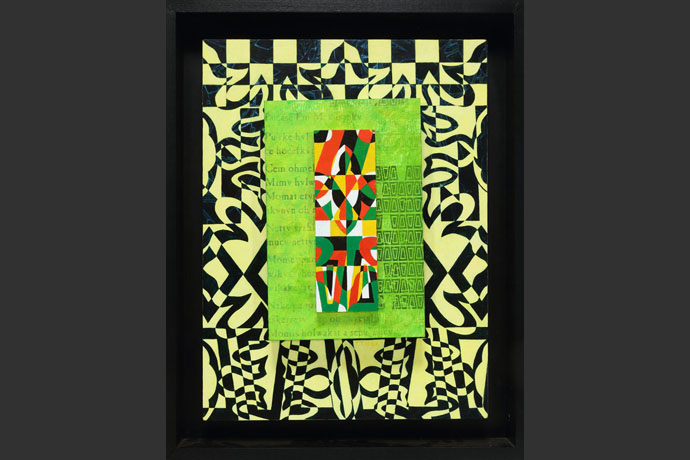
[ad_1]

“Warhol Sequoyah” by Jeff Edwards portrays Sequoyah, creater of the Cherokee syllabary, in a style popularized by the late artist Andy Warhol. Edwards often uses the famous Sequoyah portrait in the styles of other artists. Photo courtesy of Global Ministries.
“Sequoyah, he’s the creator of the Cherokee syllabary, and he had one painting commissioned of himself, and that was it,” said Jeff Edwards, who created “Warhol Sequoyah.”

Jeff Edwards, a Native American artist, has three pieces of art in the exibit “This Land Calls Us Home: Indigenous Relationships with Southeastern Homelands” in Atlanta. File photo courtesy of Jeff Edwards..
“We see the same thing over and over and over and I kind of get sick of it. … But if we put him in modern artwork, you know, it can still represent Sequoyah, but in another artist’s style. I do that a ton with Sequoyah. It’s a lot of fun to do that to him.
“I just like taking his picture and putting it in a very modern setting, which is completely out of the ordinary for him because he was in the 1800s.”
Jeff Edwards on “Know Your Enemy”
“That is a Cherokee and he is holding the head of his enemy,” Edwards said.
But the version being exhibited in Atlanta has a spider instead of the original human head, and there’s story behind that.
“The governor of Oklahoma is Kevin Stitt, and he has done everything in his power to make it really hard on the Cherokees,” Edwards said. “So in my piece, it was Kevin Stitt’s head and that’s why the piece is called ‘Know Your Enemy.’
“They discussed it there on the board and they felt like that might be kind of poor taste and I agreed with them totally. … In Oklahoma, everyone is going to get it, why I had the governor of Oklahoma’s head in this Cherokee warrior’s hand, but in Atlanta, you have people flying in from all over the country.”

“Know Your Enemy” by Jeff Edwards portrays a Cherokee Native American. The spider held by the subject’s left hand originally was the head of Oklahoma Gov. Kevin Stitt. It was changed to a spider because of concerns the reference would be missed by non-Oklahomans. Photo courtesy of Global Ministries.

“Influence of Ancestors,” an artwork by Tony A. Tiger, is about how ancestors can inform, inspire and encourage. Images include Tiger at 15, his grandfather and a Fox warrior. Photo courtesy of the United Methodist Board of Global Ministries.
Tony A. Tiger on “Influence of Ancestors”
The man on the left is Tiger’s grandfather. In the middle is Tiger himself at 15, and the man on the right is a Fox warrior, who were known to be particularly warlike, Tiger said.

Tony A. Tiger, a Native American artist, has work on display at Hartsfield-Jackson Atlanta International Airport along with 25 of his peers. Photo by Adam Bowers.
As a whole, “Influence of Ancestors” is about how our ancestors can inform, inspire and encourage, Tiger said.
“In that piece, you’ll see small, alternating triangular designs, and you’ll see those in different colors. That design represents men and women in the community, so they’re shoulder to shoulder, and then the different colors represent generation after generation after generation.”
Tony A. Tiger on “Metamorphosis”
Three levels of squares with writing and shapes inside represent the journey of a caterpillar becoming a butterfly, Tiger said of “Metamorphosis.”
“In the Bible, it talks about change; it talks about transformation. I was looking at the process of the metamorphosis of butterflies, and the more I looked at it, I would glean the idea that God did this for us so that we understand that there’s change in life, and especially in spiritual life.”
Human beings can also experience a metamorphosis as they grow during their lives, Tiger said.
“God does certain things for us in creation to help us understand the things that he wants to do in our lives. He wants to make us into something beautiful, but we have to allow him to do that.”

“Metamorphosis,” an artwork by Tony. A. Tiger, represents the journey of a caterpillar becoming a butterfly and suggests humans can also blossom in their spiritual lives. Photo courtesy of Global Ministries.
Like what you’re reading? Support the ministry of UM News! Your support ensures the latest denominational news, dynamic stories and informative articles will continue to connect our global community. Make a tax-deductible donation at
ResourceUMC.org/GiveUMCom.
[ad_2]
Source link